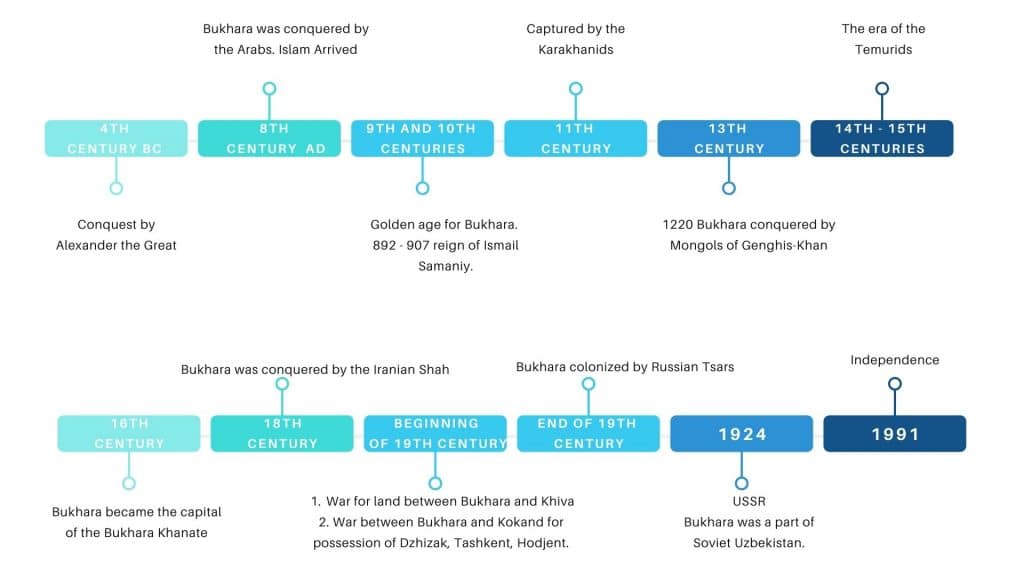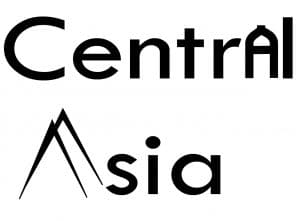Bukhara
Bukhara
From pre medieval times, Bukhara has always been a vital point on the route of silk transit from China and Central Asia to the countries of the Middle East and the Mediterranean Sea. Bukhara was the Dome of Islam, the Pillar of Religion, the power of the spirit and is the most intact historical city in the ancient East. Bukhara was boasting for centuries with diverse madrasas (Islamic schools), attracting the finest minds of the East with its cultural and commercial spirit and well earned the title of Bukhara the Holy. Trade has always been the most popular occupation here and the people of Bukhara still dedicate themselves to this business with pleasure. It is a must see destination for anyone visiting Uzbekistan in addition to Samarkand and Khiva.
Bukhara is located 250 km west from Samarkand, downstream along the Zarafshon river in the Kyzylkum desert. Bukhara holds a population of about 300 000 people and has buildings and monuments that cover the history of thousands of years. Bukhara is one of the greatest places in Central Asia for a glimpse of pre-Soviet Central Asian Medieval and ancient empires. Most of the remaining old structures in Bukhara are madrassas or minarets accompanied by an extensive royal fortress called the Ark of Bukhara and the remains of a once-vast market complex.
Officially there are about 10 mosques in the old Bukhara, several mausoleums and more than a dozen madrasahs and each of their structure is a work of art. In addition to the ones mentioned, there are also many sights which do not commonly appear in the guidebooks, perhaps due to not yet restored appearances. It means that if one wants to see them intact before heavy restoration, the time to go is now as the Uzbek state is “improving” the looks of old areas rapidly throughout the country.
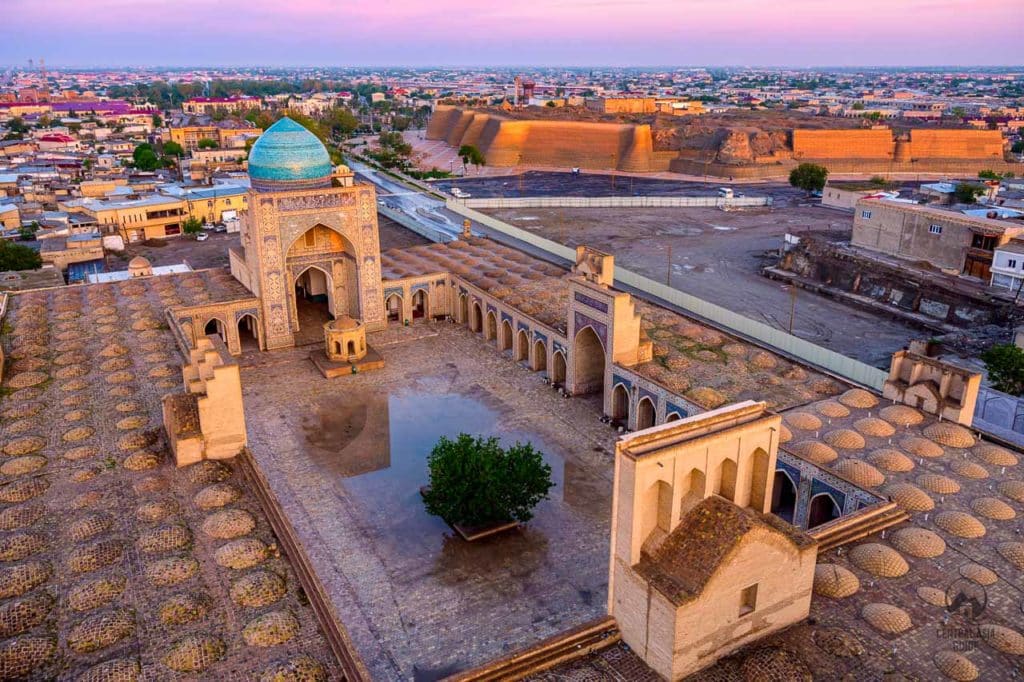
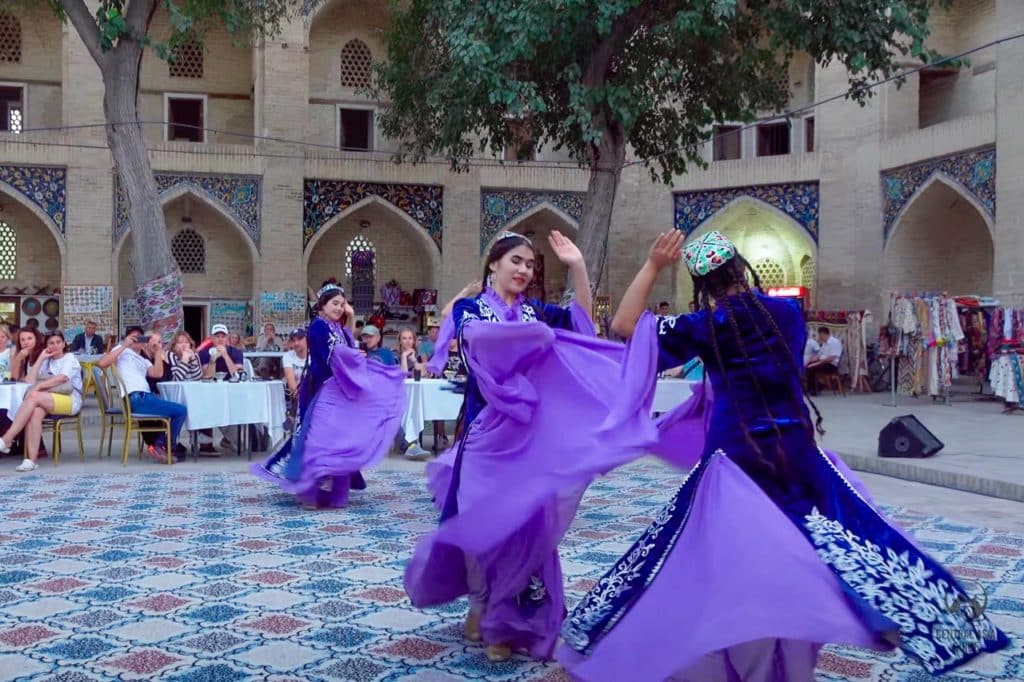
There is no precise information on where Bukhara got its name from. According to one version, it came from the word “vihara” which means a Buddhist monastery. According to another hypothesis, “Bukhara” comes from “Bukhar”, which in the language of magicians means “the source of knowledge.” Hence one of the epithets – “Scientific Bukhara”. Since ancient times, Bukhara has been the center of many religions: Zoroastrians, idolaters, Christians, Manicheans and Buddhists.
Already at the end of the 8 century AD, the Bukhara had turned into one of the major cultural and religious centers of the Muslim world and it was called the “dome of Islam”. Many mosques, tombs, madrasahs have survived from those times to this day. There are over 400 historical and architectural monuments in Bukhara, which makes this city the largest open-air museum in Central Asia. Bukhara historical city center is also a Unesco world heritage site and the best preserved intact Central Asian old city.
Tours to Bukhara
Bukhara is also included in many other Central Asia Tours and also in the Uzbekistan tours as it is without a doubt one of the must see sights of Central Asia.
Table of Contents
History of Bukhara
Bukhara found 2,500 years ago by the Persian prince Siyavush, it started as a citadel the prince built after marrying the daughter of Afrasiab. The continued success of the city connected to its strategic position, on the crossroads leading to Merv, Kabul, Samarkand. The history of Bukhara is made all the more unique by its special wealth of architectural monuments and its Islamic culture and heritage. A brief history of Bukhara
What to See in Bukhara
Bukhara is filled with sights and if one starts to feel that everything is already seen there is a lot more in the surrounding areas to be explored. The center of Bukhara is the old town “Shahristan”, where the gracious Kalon Minaret, the pool, and square called Lyabi-Hauz, as well as the main beating heart of the city with Ark of Bukhara are all located. The area is surrounded by impressive trading domes and to the west lies the Samani Park with several sights.
The majority of sights lie spread around the old town and are hence most comfortably reached on foot. Perhaps, you should start your tour through the Registan next to the Ark and proceed through the heart of the old bazaar quarter to the area around the Lyab-i Hauz square. If you wish to observe a large portion of all the sights in Bukhara, you should reserve at least three to four days.
Bukhara Squares & Unique Madrassas
The best way to start exploring Bukhara’s old town is on foot. Chor Minor madrasa marks the most eastern point of the heart of Bukhara so it is best to leave that the last or go check it as the first one and to connect it with the photogenic Lyabi Hauz square and magnificent Ulug Beg & Abdul Aziz Madrassahs. Walking more to the central area you will reach the heart of the old town where you can see the star of the Bukhara, the Poi Kalyan Complex with two large gateways to a madrasa and to a mosque standing opposite to each other together with the largest minaret in Bukhara. The best view to the complex is seen from the cafes that are located at the roofs north from the complex.
Poi Kalyan Complex
The Poi Kalyan complex is of a triad that holds the Kalyan minaret, the Kalyan mosque and the Miri Arab madrasah. Minaret Kalyan (Minara-yi Kalan) is the highest in Bukhara.
Lyabi Hauz Ensemble
Lyabi-hauz – a complex built around a reservoir that includes buildings like madrassah Kukeldash Khanaka and Madrassah of Nadir-Divan-Begi and cute monument of beloved Khoja Nasreddin.
Sights related to the Bukhara’s Jews
Jews have been living in Bukhara since possibly 12th or 13th century, developing into a unique culture with its language – Bukhari, which is related to Persian but uses the Hebrew alphabet. Bukhara’s Jews still speak it as do about 10 000 Bukhara Jews who today live elsewhere (essentially Israel). They have become the major players in Bukharan trade despite deep-rooted, traditional discrimination and they made up about 7% of Bukhara’s population during the Soviet Union’s fall but only a few hundred remain now.
They mainly left during the Soviet Union due to the antisemitistic policies as well as due to Uzbekistan’s bleak economic prospects after its independence in 1991. Today there are only two synagogues, a primary school that teaches Hebrew, a Jewish cultural association and a sprawling Jewish cemetery with more than 10 000 graves in contrast to the situation a century ago when there were at least seven synagogues.
Chor Minor Madrassa
Chor Minor is a charming building dating from 1807. It is set in a local neighborhood about a 15-minute walk from Lyabi Haus towards east. “Chor–Minor” means “four minarets” so the name certainly reflects the structure’s surface that has four small minarets topped by blue domes, each of which has various decorations.
Ulugh Beg & Abdulaziz Khan Madrasah
Ulugbek Madrasah and Abdulazizkhan Madrasah together, are two religious institutions that create a single architectural complex and are counted among the major historical monuments of Bukhara. These madrassas differ from each other not only in their architectural composition and ornamentation but also in their unique educational goals.
Ulugbeg Madrasah
Ulugbek, as a ruling scientist and educator, observed learning in the meaning of its national significance, believing the development of science to be the ultimate goal of education.
Abdulaziz Khan Madrasah
Abdulaziz Khan is an inspired supporter of the arts and was drawn more to mystical poetry and theology than to the field of science. The madrassah reflects his passion.
Registan
You should start your visit to Ark from the main vast square of Registan outside which is now the Ark’s main gate. Historically it served as both a slave market and public execution ground but is nowadays a fairly empty walking area.
Ark of Bukhara
One of the most ancient monuments of Bukhara are the Ark of Bukhara fortress walls and city gates. The site of the fortress has survived to this day with huge gaps. The remains of the walls are a unique monument to the defense system of Central Asia. The Ark Citadel is the oldest monument in Bukhara, which dates back to the 5th century. BC.
Bolo Hauz Complex
Bolo-Khauz Complex is placed on the opposite of Ark the Emir’s fortress. and consists of the pond, Friday mosque, and minaret. The complex was constructed in 1712 and it is listed in the UNESCO World Heritage Site. The mosque has been persevered to this days and still welcomes Friday prayers.
Samanids Mausoleum
The family tomb of local dynasty rulers who established a state virtually independent of the Maverannahr caliphate. The mausoleum is a cube covered with a hemispherical dome built with interesting architectural and structural solutions.
Talipach Gate
Talipach Gates is one of the two ancient gates remaining in the city of Bukhara. Gates are located west of the Chashma Ayub mausoleum where pilgrims worship the memory of the righteous Ayyubi and opposite to the Gates lies the local bazaar. Talipach Gates are one of the most glorious symbols of the history of this medieval town where the northern silk trade road led its way.
Established in the north part of the city Talipach gates were built in the 16th century during the development of fortifications under the rule of Abdul Aziz Khan I of the Sheibanids dynasty and were part of the city guard structures. Researchers discovered the names of eleven city gates, five of them were placed on the preserved part of the modern city. Gates Talipach adjoined with gate Shirgiran Imam. The other gates of the town stood before the end of the 20th century, however, they did not last till today. The preserved remains of the gates of the city are listed in the UNESCO World Heritage List.
Kosh-Madrassah Ensemble
During the reign of Sheibanid Abdullah Khan II (1557-1597), two opposing majestic architectural ensembles consist of Modari Khan madrasah in honor of Abdullah Khan’s mother, and the second bears the name of Abdullah Khan himself and was built in 1588-1590.
Chashma-Ayub Mausoleum
Prophet Job struck here the arid ground and a spring of pure drinking water miraculously burst forth, saving his followers when those around them were dying of thirst. Today the mausoleum has been turned into the Water museum, however, it still holds the old gravestones.
Magoki Attor Mosque
Magoki Attari is the most ancient preserved mosque in Bukhara. It is one of the few structures in Bukhara that was partly or wholly made before the Mongol invasions of 1219-1221. Magoki Attari translated means “the mosque in the pit” or “deep mosque”. It is located in the center of the city, west from Lyabi Hauz complex between the Taki Sarrafon and Taki Telpal Furushon trading domes. Before the Arabian conquest, the trade market for spices and herbs sellers was at the site of the mosque. The Magoki Attori Mosque is attributed to the type of so-called closed mosques, with the ceiling on six stone pillars. It is listed in the UNESCO World Heritage Site as part of the Historic Centre of Bukhara. Today, the mosque is utilized as a carpet museum.
Magok-i-Kurpa Mosque
Magok-i-Kurpa Mosque was erected in 1637 and is located in the historical center of Bukhara just opposite of the other older (oldest) mosque with a similar name Magok Attari mosque. The Magok-i-Kurpa mosque has a rectangular ground plan of 15 × 24 square meters. It has two storeys, with the lower floor begin, down a staircase, almost entirely below the surface of the earth. Therefore, the mosque also has its name addition “Magok-i” which means “in the hole” or “in the subsoil”. The roof carries twelve domes. The main dome sits on a cylindrical drum and rises 20 m above the ground. Magok-i-Kurpa Mosque is also part of the UNESCO World Heritage Site Historic Centre of Bukhara.
Khoja Gaukushan Ensemble
Khoja Gaukushan is translated as “Killing Bulls” since it was the place of a former butchery and trading grounds in 1570. A structure was built according to the traditional courtyard scheme in a typical oriental style. The complex consists of a madrasah, mosque, minaret and a pool (hauz).
Fayzulla Khujayev House Museum
House Museum of Faizullah Khodjaev, or the house of the Rich Bukhara Merchant at end of the 19th century. Faizulla Khojaev was one of the most prominent representatives of his time. He was a fighter for equality, r for democracy, however, he was one condemned to death by Stalin in the 1930s as a class enemy.
What to do in Bukhara
Relax in Bukhara style Bathhouses and Hamams
Oriental baths are very popular in Central Asia, especially in Uzbekistan. The customs of all oriental baths that are mostly known to us have been similar already from the ancient times. The first Central Asian hammams date back to the 7th century. It is believed that the Turks took over the culture of steaming in an oriental way from the Arabs, and they in turn from the Romans. The spread of hammams in Asia happened along with the spread of Islam religion and way of life. Since the Prophet Muhammad it has been recommended that his followers should take hot baths, as “Purity is half of faith.”
Two old main baths have survived in Bukhara and still operate after over 600 years of existence. The women’s bathhouse – Hammomi-Kunjak and the men’s bathhouse – Bozor-i Kord are located next to the dome of Tok-i Telpak Furushon (trading dome) in the very center of Bukhara. The old Bukhara bathhouse “Bozori Kord Hammam” was built in the 14 century and has not lost its unique traditions and healing properties. If you wish to experience the real Bukhara you should certainly visit them.
Shopping in the Colorful Domes of Bukhara
Bukhara is popular for it its several trading domes (old markeplaces) that stretch from Lyabi-Khauz to the Miri-Arab madrasah. The still existing Bukhara trading domes date back to the 16th century. Bukharas’ ideal location along the Silk Road gave it an advantage for the quick growth along with the trade.
Several centuries have passed and from the original five dome-covered bazaars, four remain today. At the time of active operation, they were all connected with long passages of archways. The trading domes remain popular for locals and foreign visitors as well and have become an iconic image of Bukhara.
Visit Bukhara's Puppet Theater
Theatre seems to have arrived in Central Asia in the 4th century BC and was known as Maskara where performers wore masks. Puppet performances are recorded from the 1st century AD and were hugely famous. However, when Islam conquered the region, puppet performances were banned. Fortunately, in the 9th century, the enlightened Samanid emperors encouraged the arts, literature together with science. Bukhara became the empire’s capital and it approached Baghdad in its glory. The Samanids revived numerous ancient traditions, including the puppet theatre. It is assumed that one ruler declared that after Friday prayers a puppet show should be staged in Bukhara’s main square Registan.
At the beginning of the 20th century, all artists, musicians and puppeteers lived in the same neighborhood of Bukhara. Puppeteers handed down their skills and secrets to their sons, who in turn added their improvisations to the stories. Popular characters such as Khodja Nasruddin, remembered for his funny stories and anecdotes, were often included in the plays. Politics of the day were also made fun of. With the arrival of the Soviets, the theatres received government support. However, by the 1950s, funding declined for puppet shows and they had almost disappeared, perhaps because they could be so subversive. In the post-USSR times, there has been a significant revival in Central Asian puppetry. Kazakhstan has at least nine large puppet theatres, some of which are private while Uzbekistan has ten, all state-owned. Kyrgyzstan and Tajikistan both have two state-run puppet theatres.
If you are in Bukhara you may check out the workshops of puppet makers: Iskandar Khakimov’s atelier is located at 2 Centralnaya street on the south side of the Lyabi Hauz. He explains each step of how he makes his gorgeous puppets, from the papier-mâché heads beautifully painted in oils to the hand-stitched traditional costumes. They also organize puppet shows in the English language.
Outskirts of Bukhara
Bukhara Emir Palaces & mausoleums
Sitori-i Mokhi Khosa
The Summer Palace of Bukharan Emirs
The confluence of East and West is felt at every step in the Bukhara palace. The palace areas includes a beautiful garden and a pool where royalty could find shelter from the scorching Bukhara sun during hot summer days. This summer palace has borrowed a lot from the European palaces but still has its own unique oriental touch in it.
Emir's Palace in Kagan
Train station
The period of the Russian Empire’s invasion of the lands of Central Asia is clearly reflected in the architecture of this area. The Palace of the emir of Sayyid Abd-al-Ahad in Kagan is a perfect example of it. It is the palace where Tsar Nicholas II was supposed to stay when visiting Bukhara.
Chor Bakr Necropolis
Chor Bakr is well known as the city of the dead. The Chor Bakr necropolis is one of the largest architectural ensembles of Uzbekistan, situated 6 km west of Bukhara.
Saif ed-din Bokharzi & Bayan-Quli Khan
Mausoleums of Saif ed-Din al-Boharsi was a very popular poet, sheik, and theologian who lived in the 13th century and another monument dedicated to the Chagatay ruler Bayan-Quli Khan.
These two mausoleums located on the northeastern outskirts of Bukhara and belong to the outstanding scholars of their time called Amir Kalal and his most famous student Bahauddin Naqshband.
Amir Kalal Mausoleum
Amir Kulal Mausoleum is located 25 km north of Bukhara in the village of Suhar. Said Amir Kulal was a respected representative of the spiritual and intellectual life of 14th-century Bukhara.
Bakhauddin Naqshband Mausoleum
The necropolis is placed 10 km east of Bukhara in the village of Karsi. Bakhauddin Naqshband lived in 1318 – 1389, was an unofficial patron saint ad the founder of the most important Sufic order in Central Asia.
There have been over 300 settlements in the territory of the Bukhara oasis throughout the history, that are now hidden in swollen hills and mounds.
The ruins of disappeared cities and settlements hiding are still mostly hiding in their depths as many of them are waiting for their discoverers and some, such as Varakhsha, Verdana and Paikend, have already been investigated by archeologists and have become historical monuments of the past civilizations.
Travel to Bukhara
Bukhara by Bus / Taxi
Bukhara has three bus stations and it depends on your direction which one you will be arriving or which one to choose for departure. From Tashkent and Samarkand, you can reach Bukhara by bus in 8 h and 4 h respectively. They arrive at the Central Bus Station (Centralnyi Avtovoikzal) located in Gijiduvani street in the northern part of the town. If you are arriving from Urgench or Khiva (takes about 6 h) you will arrive at the bus station Karvon Bazar, on the roundabout further up from Gijduvon street. And the last one if you arriving or departing to Shahrisabz (5 h) and Qarshi (2 h) you need to get to the Sharq stand near the airport on the corner of Naqshband and G’uzor streets.
Bukhara by Airplane
There are daily flights to Bukhara operated from Tashkent, taking about 1 h. There are also weekly services from Moscow, Saint-Petersburg and Krasnodar from Russia. Bukhara airport is located 5 km east of the city center. You can get there by taxi or by public transport but using public transportation will take a bit more time.
Bukhara by Train
Bukhara is well connected with rails towards west to Urgench and all the way to Aktau and Atyrau in Kazakhstan. The trains running westwards are the classic Sharq type trains. Towards east there is also a faster option through Bukhara to Tashkent with the newer and faster Afrasiyab trains. The Bukhara train station is actually located in Kagan which is 10 km southeast from the Bukhara city center. Check the schedules and book tickets from official website.

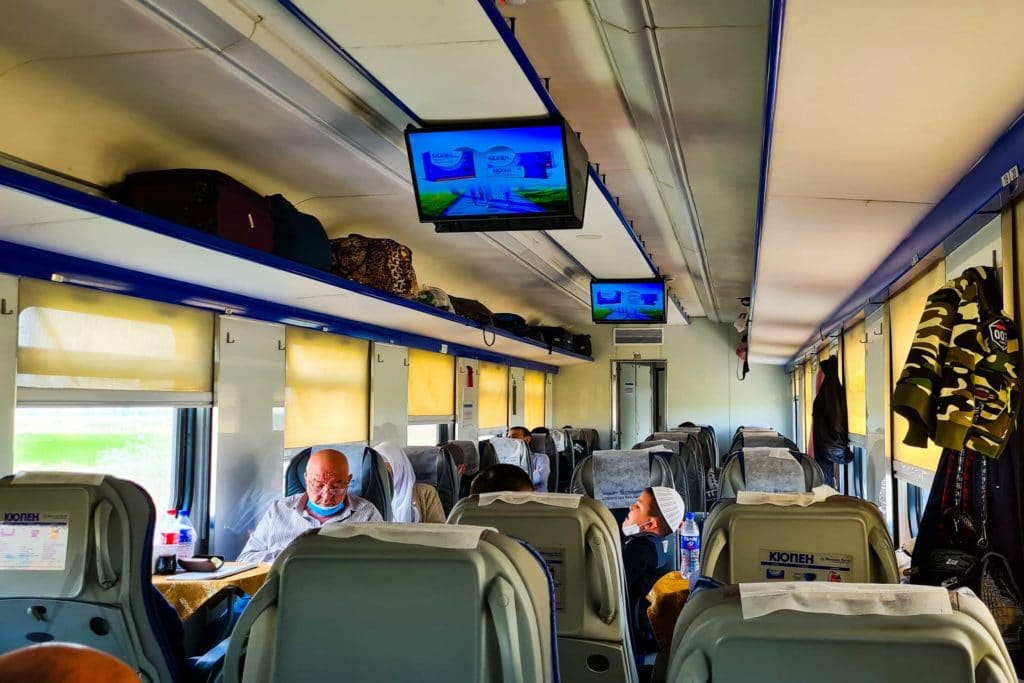
Destinations near BUkhara
Page updated 27.9.2023
